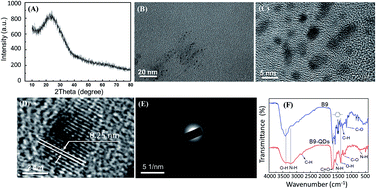A facile approach for the synthesis of highly luminescent carbon dots using vitamin-based small organic molecules with benzene ring structure as precursors
Abstract
In this study, vitamin-based small organic molecules were used as precursors to synthesize carbon dots by means of a hydrothermal approach. The obtained carbon dots presented high luminescence and good cellar-imaging properties when folic acid was used as a precursor and the quantum yield of the carbon dots obtained using the present method was more than 30%. Moreover, green and yellow-green photoluminescence was also successfully achieved by adding the reagents H3PO4 and H2C2O4, respectively. The related formation mechanism and photoluminescence emission mechanism of carbon quantum dots were discussed. The present study will open a new possible route for the synthesis of carbon dots with high quality using small organic molecules as precursors.


 Please wait while we load your content...
Please wait while we load your content...